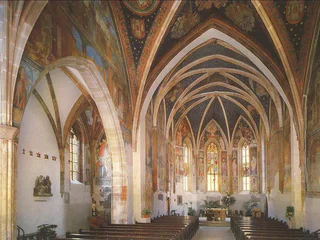
1/3
Parish church "Maria Himmelfahrt" (Mary’s ascension) by Terlan
Terlano/Terlan, Terlan/Terlano, Alto Adige Wine Road
Znajdź wszystkie oferty kulturalne w Południowym Tyrolu na pierwszy rzut oka i zaplanuj swoje działania.

1/3
Terlano/Terlan, Terlan/Terlano, Alto Adige Wine Road

S. Paolo/St. Pauls - Appiano/Eppan, Eppan an der Weinstaße/Appiano sulla Strada del Vino, Alto Adige Wine Road

1/4
Castelrotto/Kastelruth, Kastelruth/Castelrotto, Dolomites Region Seiser Alm

1/4
Moso in Passiria/Moos in Passeier, Moos in Passeier/Moso in Passiria, Meran/Merano and environs

Merano/Meran, Meran/Merano, Meran/Merano and environs

Tramin an der Weinstraße/Termeno sulla Strada del Vino, Alto Adige Wine Road

Nova Ponente Centro/Deutschnofen Dorf, Deutschnofen/Nova Ponente, Dolomites Region Eggental

1/2
Telves/Telfes, Ratschings/Racines, Sterzing/Vipiteno and environs

Laces/Latsch, Latsch/Laces, Vinschgau/Val Venosta

1/2
S. Pietro/St. Peter - Valle Aurina/Ahrntal, Ahrntal/Valle Aurina, Ahrntal/Valle Aurina

Ora/Auer, Auer/Ora, Alto Adige Wine Road

Nova Ponente Centro/Deutschnofen Dorf, Deutschnofen/Nova Ponente, Dolomites Region Eggental

Fraina/Freins, Lajen/Laion

1/4
S. Maddalena/St. Magdalena - Funes/Villnöss, Villnöss/Funes, Dolomites Region Villnösstal

Colle Isarco/Gossensaß, Brenner/Brennero, Sterzing/Vipiteno and environs

1/3
Villabassa/Niederdorf, Niederdorf/Villabassa, Dolomites Region 3 Zinnen

1/5
Siusi/Seis, Kastelruth/Castelrotto, Dolomites Region Seiser Alm

S. Osvaldo/St. Oswald - Bolzano/Bozen, Bolzano/Bozen, Bolzano/Bozen and environs

Ora/Auer, Auer/Ora, Alto Adige Wine Road

S. Maddalena/St. Magdalena - Casies/Gsies, Gsies/Valle di Casies

Rasun di Sotto/Niederrasen, Rasen-Antholz/Rasun Anterselva, Dolomites Region Kronplatz/Plan de Corones

1/2
Salorno/Salurn, Alto Adige Wine Road

1/2
Sluderno/Schluderns, Schluderns/Sluderno, Vinschgau/Val Venosta

1/7
Burgusio/Burgeis, Mals/Malles, Vinschgau/Val Venosta

Naz/Natz, Natz-Schabs/Naz-Sciaves, Brixen/Bressanone and environs

Ora/Auer, Auer/Ora, Alto Adige Wine Road

Vallelunga/Langtaufers, Graun im Vinschgau/Curon Venosta, Vinschgau/Val Venosta

1/2
Bolzano Centro/Bozen Zentrum, Bolzano/Bozen, Bolzano/Bozen and environs

1/2
Castelvecchio/Altenburg, Kaltern an der Weinstraße/Caldaro sulla Strada del Vino, Alto Adige Wine Road

Pianizza di Sotto/Unterplanitzing, Kaltern an der Weinstraße/Caldaro sulla Strada del Vino, Alto Adige Wine Road